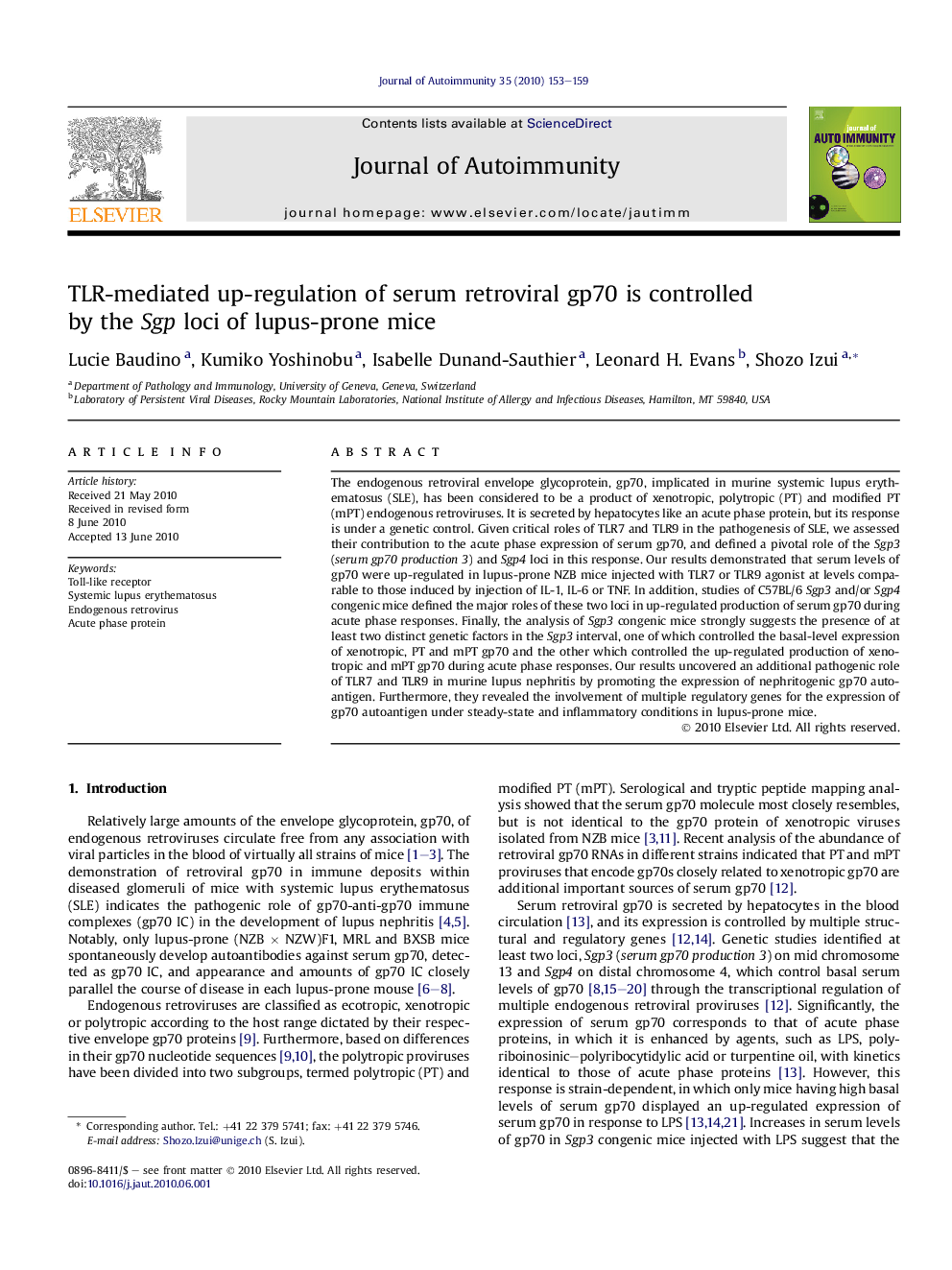| Article ID | Journal | Published Year | Pages | File Type |
|---|---|---|---|---|
| 3368047 | Journal of Autoimmunity | 2010 | 7 Pages |
The endogenous retroviral envelope glycoprotein, gp70, implicated in murine systemic lupus erythematosus (SLE), has been considered to be a product of xenotropic, polytropic (PT) and modified PT (mPT) endogenous retroviruses. It is secreted by hepatocytes like an acute phase protein, but its response is under a genetic control. Given critical roles of TLR7 and TLR9 in the pathogenesis of SLE, we assessed their contribution to the acute phase expression of serum gp70, and defined a pivotal role of the Sgp3 (serum gp70 production 3) and Sgp4 loci in this response. Our results demonstrated that serum levels of gp70 were up-regulated in lupus-prone NZB mice injected with TLR7 or TLR9 agonist at levels comparable to those induced by injection of IL-1, IL-6 or TNF. In addition, studies of C57BL/6 Sgp3 and/or Sgp4 congenic mice defined the major roles of these two loci in up-regulated production of serum gp70 during acute phase responses. Finally, the analysis of Sgp3 congenic mice strongly suggests the presence of at least two distinct genetic factors in the Sgp3 interval, one of which controlled the basal-level expression of xenotropic, PT and mPT gp70 and the other which controlled the up-regulated production of xenotropic and mPT gp70 during acute phase responses. Our results uncovered an additional pathogenic role of TLR7 and TLR9 in murine lupus nephritis by promoting the expression of nephritogenic gp70 autoantigen. Furthermore, they revealed the involvement of multiple regulatory genes for the expression of gp70 autoantigen under steady-state and inflammatory conditions in lupus-prone mice.
